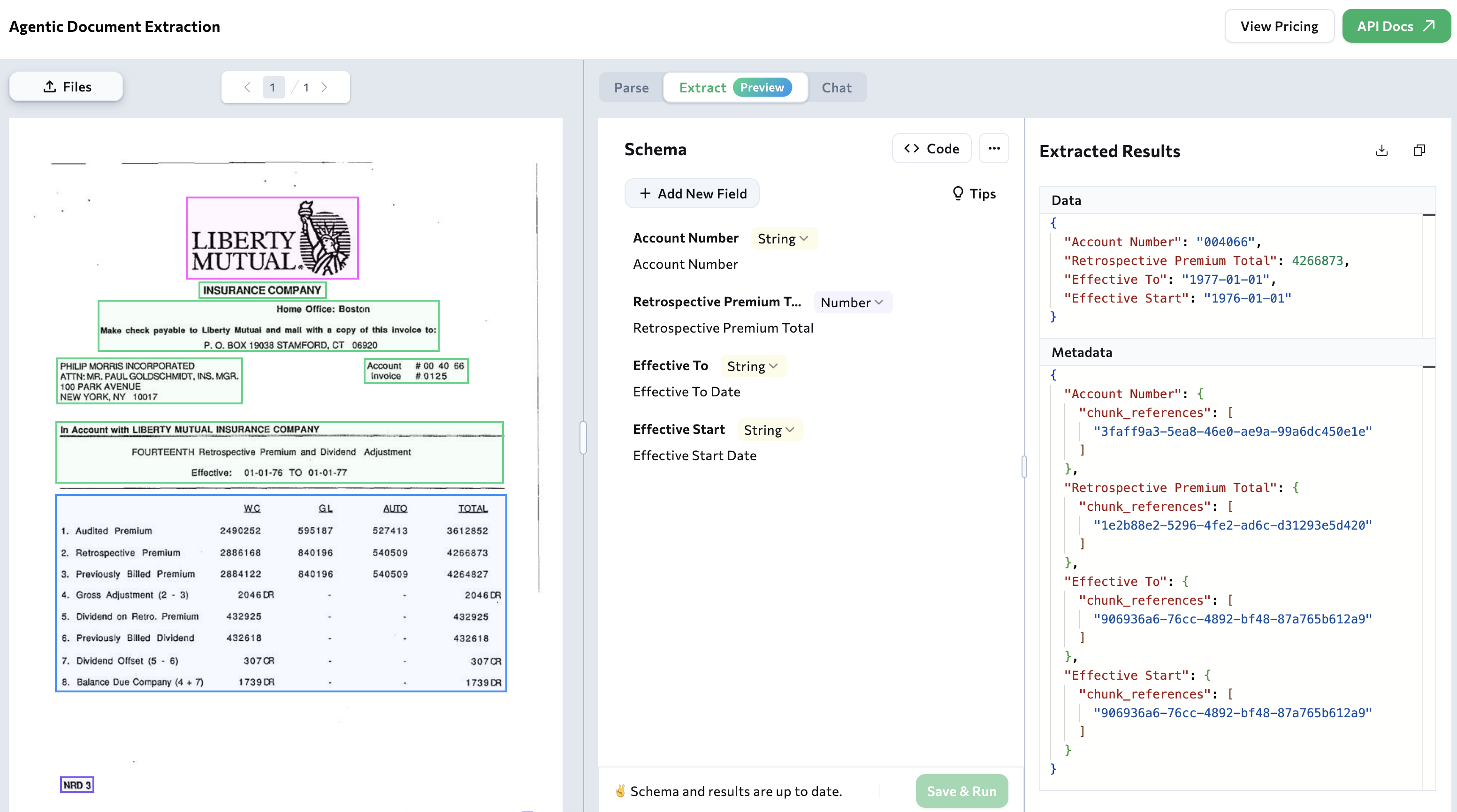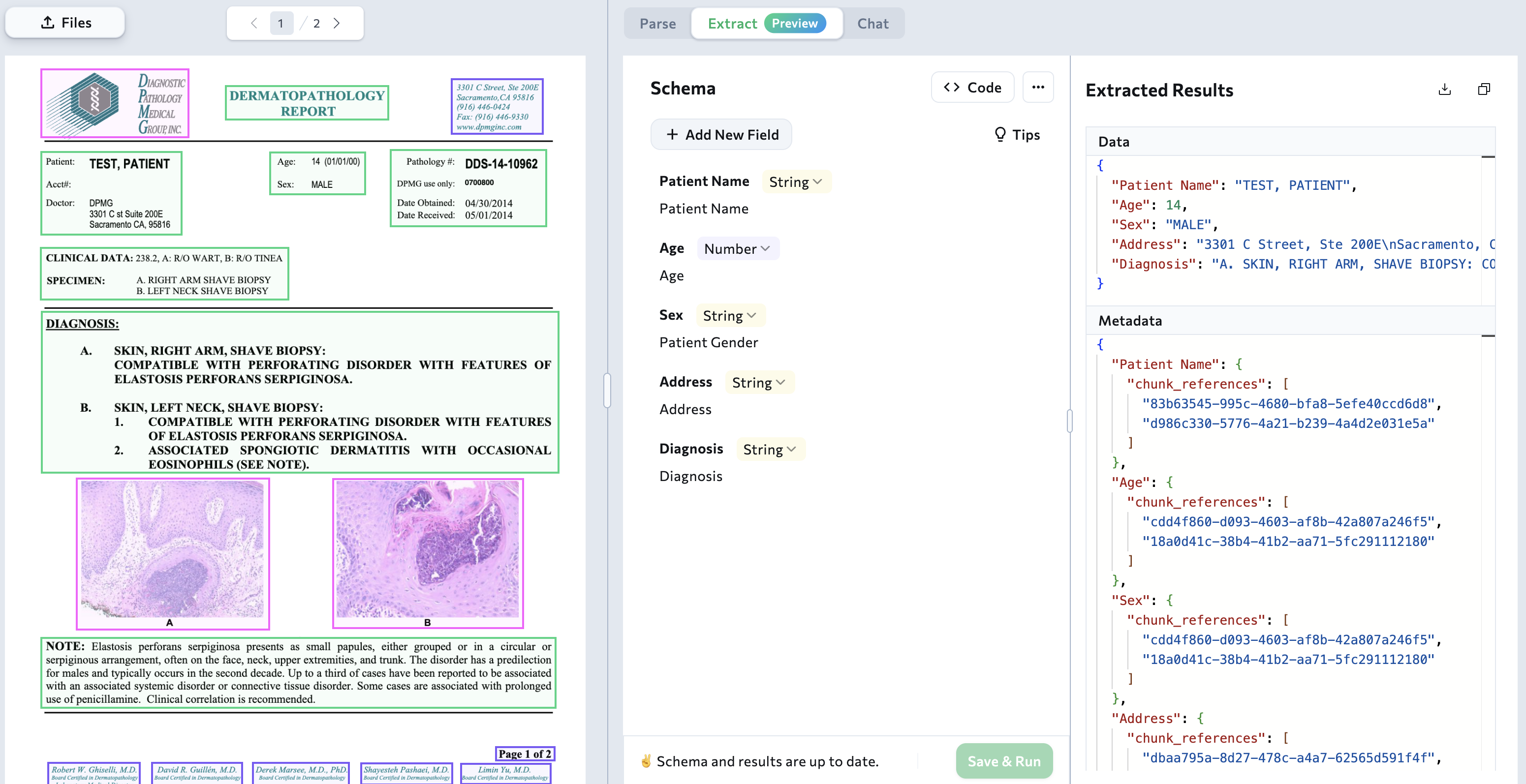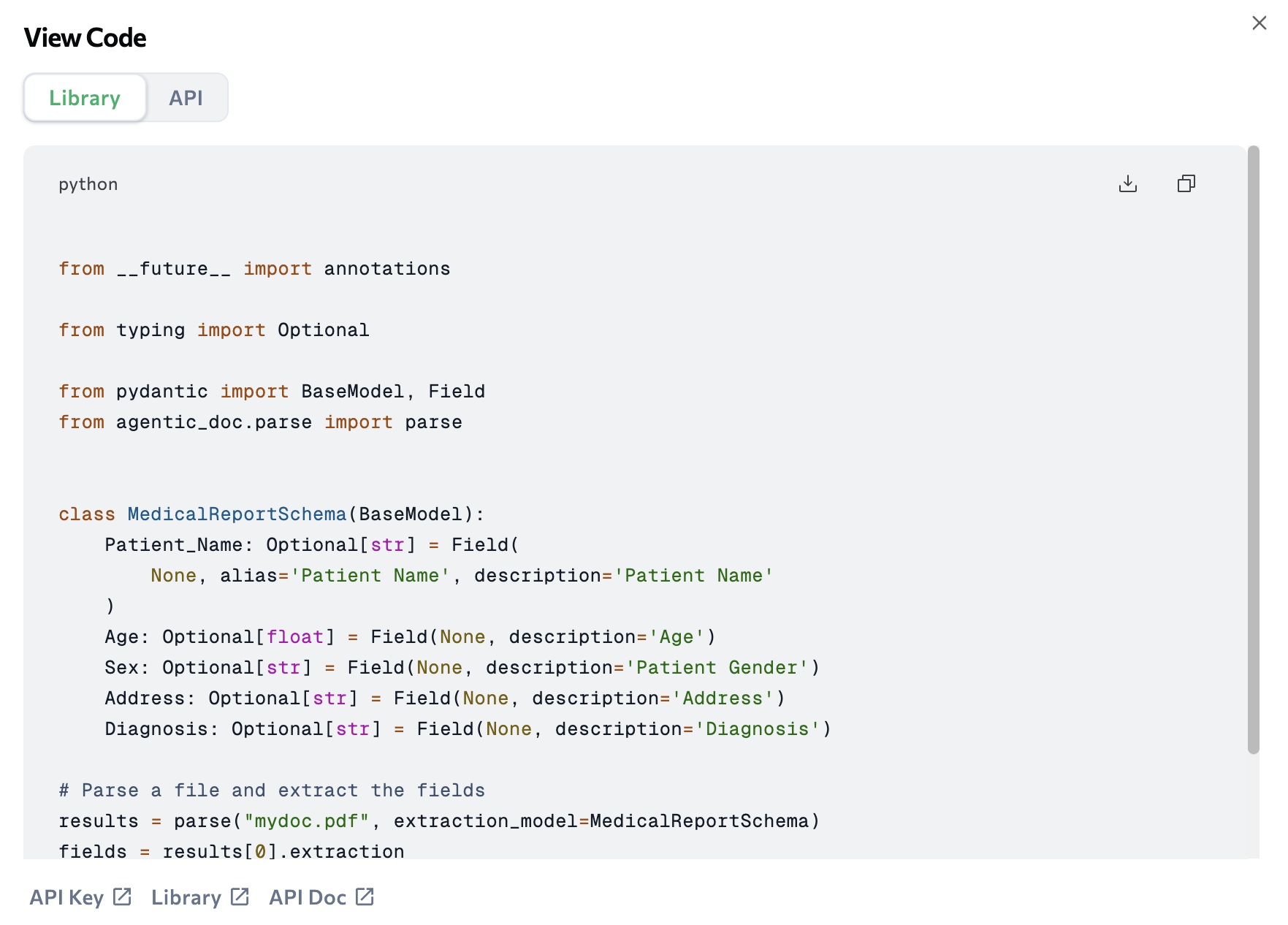Total Income field from tens of thousands of loan applications, you can use the API to do that.

For information about pricing and credits, go to Pricing & Billing.
Get Started: Extraction Workflow
We recommend using the schema extraction wizard directly in our Playground to build and validate an extraction schema. You can then use that schema when parsing documents:- Use the schema extraction wizard in our Playground to build a schema tailored to your documents.

- Choose a format to export the schema to: the library or the API.

- Include the schema when use the library or the API.
You can also extract data in the Playground. We recommend doing this only for testing purposes, since the Playground isn’t designed to handle bulk document processing.
The Library and API Use Different Schemas Formats
The schema format used in the library and API is different. But no worries; you can build or upload a schema in the Playground and then choose which format to export it to! Learn more about the schema format for each use case:Use Schemas in the Python Library
Define the fields that you want to extract using Pydantic models directly in your code.
Use JSON Schemas in the API
Pass the schema in the API call or define the schema directly in your code.
Classification
As part of the extraction process, you can classify documents and extract data based on the type of document it is. For example, let’s say you work for a financial institution and want to extract a set of data from Loan Applications and another set of data from Income Statements. You can assign a class to each document, and then extract data based on that document’s class. In the JSON schema used in the Playground and when calling the API, use theenum keyword to identify the document types.
